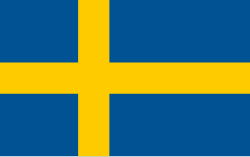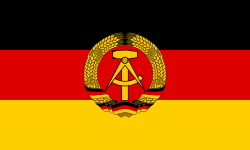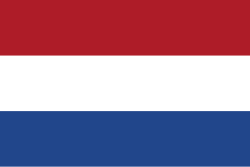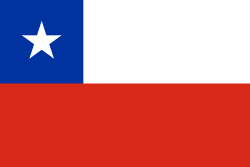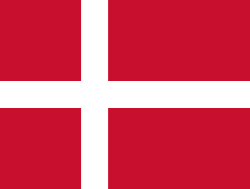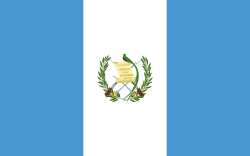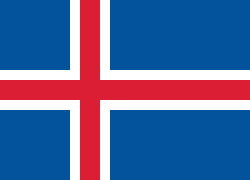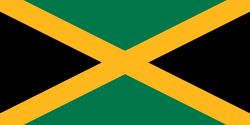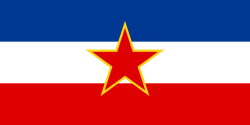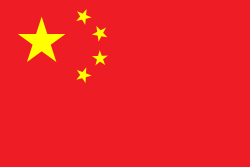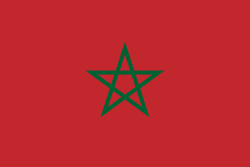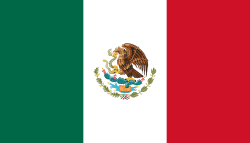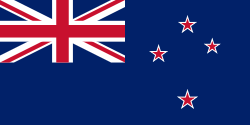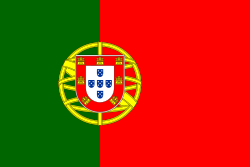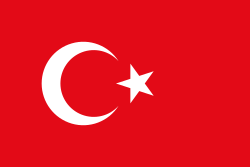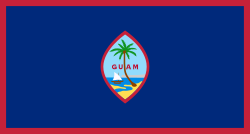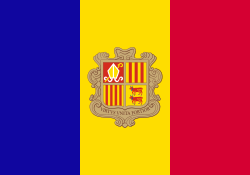Olympiska vinterspelen 1988
| Olympiska vinterspelen 1988 | |
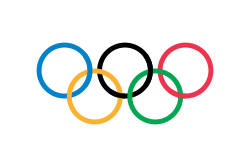 | |
| Grenar | 22 grenar i 6 sporter |
|---|---|
| Deltagare | |
| Nationer | 57 |
| Aktiva | 1 423 |
| Män | 1 122 |
| Kvinnor | 301 |
| Värdskap | |
| Land | |
| Ort | Calgary |
| Arena | McMahon Stadium |
| Invigning | 13 februari 1988 |
| Spelen öppnades av | Jeanne Sauvé (Generalguvernör) |
| Läste deltagarnas ed | Pierre Harvey |
| Läste funktionärernas ed | Suzanna Morrow-Francis |
| Elden tändes av | Robyn Perry |
| Avslutning | 28 februari 1988 |
Olympiska vinterspelen 1988 var de femtonde (XV) olympiska vinterspelen, och de arrangerades i Calgary, Alberta i Kanada den 13-28 februari 1988.
Noterbart
- Den finska backhopparen Matti Nykänen lyckades med det omöjliga, han vann samtliga tre backhoppsdiscipliner tämligen överlägset.
- Den nederländska hastighetsåkaren på skridsko Yvonne van Gennip vann tre guld och satte två världsrekord.
- Alberto Tomba, Italien, vann två guldmedaljer i alpin skidåkning.
- Två deltagare; Eddie 'the Eagle' Edwards, Storbritannien, och Jamaicas boblag, med liten erfarenhet och ingen chans till medalj blev stort uppmärksammande i media, i vissa fall mer än vinnaren. De fick delta för att symbolisera den olympiska andan: Att spelen inte går ut på att vinna utan att delta. År 1993 producerades en film om det jamaicanska boblaget.
- Det var första gången som super-G utövades av både män och kvinnor.
- Curling, Freestyle, Short track och Skidåkning för rörelsehindrade var demonstrationsevenemang.
- För första gången hölls öppningsceremonin och avslutningsceremonin i samma arena.
Kandidatur
Beslutet om värdort togs i Baden-Baden i Baden-Württemberg i Västtyskland 1981.[1]
| Omröstning angående värdskap | |||||
|---|---|---|---|---|---|
| Stad | Nation | Round 1 | Round 2 | ||
| Calgary, Alberta | 35 | 48 | |||
| Falun | 25 | 31 | |||
| Cortina d'Ampezzo | 18 | - | |||
Sporter
Demonstrationssporter
Medaljer
| Pl. | Nation | Guld | Silver | Brons | Totalt |
|---|---|---|---|---|---|
| 1 | 11 | 9 | 9 | 29 | |
| 2 | 9 | 10 | 6 | 25 | |
| 3 | 5 | 5 | 5 | 15 | |
| 4 | 4 | 1 | 2 | 7 | |
| 5 | 4 | 0 | 2 | 6 | |
| 6 | 3 | 5 | 2 | 10 | |
| 7 | 3 | 2 | 2 | 7 | |
| 8 | 2 | 4 | 2 | 8 | |
| 9 | 2 | 1 | 3 | 6 | |
| 10 | 2 | 1 | 2 | 5 |
Deltagande nationer
57 nationer deltog i spelen. Det var de första spelen för; Fiji, Guam, Guatemala, Jamaica och Nederländska Antillerna.
|
|
|
Se även
Källor
Fotnoter
- ^ ”Calgary 1988”. Sveriges olympiska kommitté. http://sok.se/olympiska-spel/tavlingar/spelen/calgary-1988.html. Läst 19 juli 2017.
Externa länkar
- Olympiska rörelsen
- Officiell rapport
- Calgary Olympic Development Association
- Canada Olympic Park
- CBC Digital Archives - The Winter of '88: Calgary's Olympic Games
- Possible 2010 Rendition of the Canadian Centre of Sport Excellence
- Program för olympiska vinterspelen 1988
 Wikimedia Commons har media som rör Olympiska vinterspelen 1988.
Wikimedia Commons har media som rör Olympiska vinterspelen 1988.
Media som används på denna webbplats
Olympic Movement flag
Proportions 2:3, created 1913, adopted 1914, first used 1920.
- Colors as per http://fairspielen.de/wp-content/uploads/2015/09/Annexe-3-Olympism_and_the_Olympic_Symbol_-_Principles_and_Usages_Guide-1.pdf
- blue: PMS 3005C
- yellow: PMS 137C
- black: PMS 426C
- green: PMS 355C
- red: PMS 192C
- Dimensions of the rings taken from http://fairspielen.de/wp-content/uploads/2015/09/Annexe-3-Olympism_and_the_Olympic_Symbol_-_Principles_and_Usages_Guide-1.pdf
Pictograms of Olympic sports - Speed Skating
The civil ensign and flag of Belgium. It is identical to Image:Flag of Belgium.svg except that it has a 2:3 ratio, instead of 13:15.
Författare/Upphovsman: Scroch, Licens: CC BY-SA 3.0
Flag of Bulgaria (1971-1990). Flag of Bulgaria with Bulgarian coat from 1971.
Det är enkelt att lägga till en ram runt den här bilden
Flag of Jamaica. “The sunshine, the land is green, and the people are strong and bold” is the symbolism of the colours of the flag. GOLD represents the natural wealth and beauty of sunlight; GREEN represents hope and agricultural resources; BLACK represents the strength and creativity of the people. The original symbolism, however, was "Hardships there are, but the land is green, and the sun shineth", where BLACK represented the hardships being faced.
Flag of the Socialist Federal Republic of Yugoslavia (1946-1992).
The design (blazon) is defined in Article 4 of the Constitution for the Republic of Yugoslavia (1946). [1]
Flag of the Socialist Federal Republic of Yugoslavia (1946-1992).
The design (blazon) is defined in Article 4 of the Constitution for the Republic of Yugoslavia (1946). [1]
Chinese Taipei Olympic Flag. According to the official website of Chinese Taipei Olympic Committee, Blue Sky(circle) & White Sun(triangles) above the Olympic rings is neither the National Emblem of the Republic of China, nor the Party Emblem of Kuomintang (KMT), but a design in between, where the triangles do not extend to the edge of the blue circle, as registered at International Olympic Committee in 1981 and digitally rendered in 2013. Besides, the blue outline of the five-petaled plum blossom is broader than the red one. Moreover, the CMYK code of the blue one and the Blue Sky & White Sun is "C100-M100-Y0-K0", and different from the Olympic rings (C100-M25-Y0-K0). Note that it's the only version recognized by IOC.
Flag of Liechtenstein
Författare/Upphovsman: Gutten på Hemsen, Licens: CC0
Flag of Norway with colors from the previous version on Commons. This file is used to discuss the colors of the Norwegian flag.
Flag of Portugal, created by Columbano Bordalo Pinheiro (1857–1929), officially adopted by Portuguese government in June 30th 1911 (in use since about November 1910). Color shades matching the RGB values officially reccomended here. (PMS values should be used for direct ink or textile; CMYK for 4-color offset printing on paper; this is an image for screen display, RGB should be used.)
Flag of Romania, (21 August 1965 - 22 December 1989/officialy 27 December 1989).

Construction sheet of the Flag of Romania as depicted in Decree nr. 972 from 5 November 1968.
- l = 2/3 × L
- C = 1/3 × L
- S = 2/5 × l
Flag of Romania, (21 August 1965 - 22 December 1989/officialy 27 December 1989).

Construction sheet of the Flag of Romania as depicted in Decree nr. 972 from 5 November 1968.
- l = 2/3 × L
- C = 1/3 × L
- S = 2/5 × l
Flag of South Korea from 21 February 1984 to 15 October 1997, when the exact colors were specified into their shades.
Olympic Rings without "rims" (gaps between the rings), As used, eg. in the logos of the 2008 and 2016 Olympics. The colour scheme applied here was specified in 2023 guidelines.
Olympic Rings without "rims" (gaps between the rings), As used, eg. in the logos of the 2008 and 2016 Olympics. The colour scheme applied here was specified in 2023 guidelines.
Pictograms of Olympic sports - Ski jumping
Författare/Upphovsman: unknown, Licens: CC BY-SA 2.5
Pictograms of Olympic sports - Ice hockey
Pictograms of Olympic sports - Bobsleigh
Pictograms of Olympic sports - Biathlon
Pictograms of Olympic sports - Alpine skiing
Pictograms of Olympic sports - Nordic combined
The flag of Guam, courtesy an e-mail from the author of xrmap. Modifications by Denelson83.
Pictograms of Olympic sports - Luge
Författare/Upphovsman: Scroch, Licens: CC BY-SA 3.0
Flag of Bulgaria (1971-1990). Flag of Bulgaria with Bulgarian coat from 1971.
Pictograms of Olympic sports - Figure skating
Flag constructed according [1]; using non-traced, pure SVG coat of arms obtained from Image:Coat of arms of Costa Rica.svg, xrmap flag collection 2.9. The emblem is very important it signifies different places and things in Costa Rica.
Pictograms of Olympic sports - Cross country skiing


